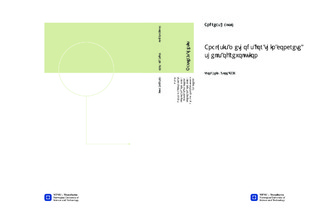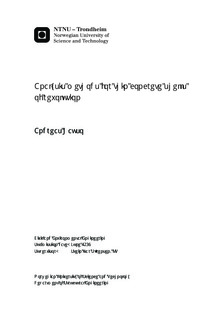| dc.description.abstract | This paper aims to give an objective comparison of analytical and numerical solutions to thin concrete shells of revolution. The numerical simulations are performed using the finite element software Diana. The main focus is on cylindrical and spherical shells, as they are typical geometries for constructing shells in concrete. Some assessment of the necessary theory on circular plates and ring beams is also presented since these are structural components frequently related to the shells in question.In order to attain a fundamental understanding of the load carrying behaviour of shells, the classical background material on thin shells of revolution is thoroughly investigated. Detailed deductions of the governing equations in membrane- and bending theory constitute the first part of the paper. This theory is then applied to cases involving typical connected shell structures which highlights different aspects of the analytical theory. Further assessments of these structures are done using finite element software, which provides a basis for comparing the analytical and numerical solutions. Finally, one of the structures are designed in accordance with the Eurocodes, accompanied by a nonlinear analysis. For this purpose a comparative study of line and solid elements is conducted. In the context of linear static analysis, two- and three-node axisymmetric shell of revolution elements show superb accuracy when compared to the analytical solutions. Intrinsic shell properties, such as the damping of forces and moments from the shell boundaries, are accurately represented.Element comparison shows a lower degree of accuracy from solid element solutions compared to the line alternative. This is especially true for shear stresses, which show oscillating behaviour near the edge zones of the shells. These oscillations are considered one of the main uncertainties in the solid model used for the nonlinear analysis.From the nonlinear analysis, the design of the structure was found to be adequate. The results show that the forces have been correctly redistributed to the reinforcement, and that the total load the structure can endure is approximately 1.08 times of the design load. Finite element analysis provides a powerful tool for evaluating the load response from connected concrete shell structures. Analytical solutions, although bringing valuable insight in the leading principals governing the shell behaviour, are highly exposed to human errors. As a consequence they are less attractive in practice. Finite element simulations coupled with a general understanding of the classical theory is therefore recommended for the executing engineer. | nb_NO |

